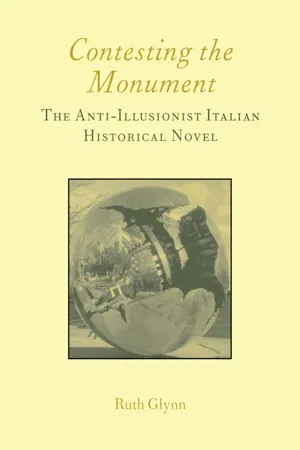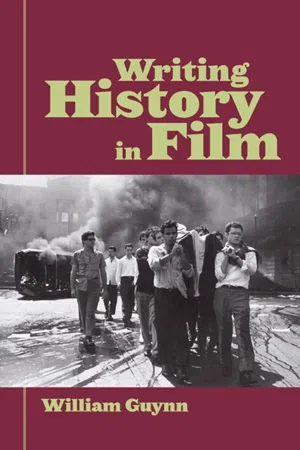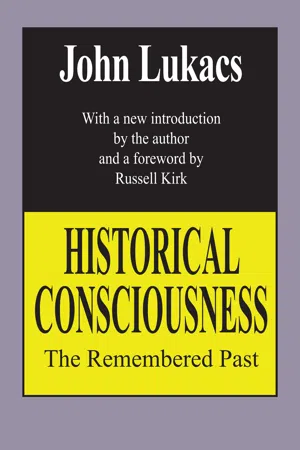Historical Fiction
Historical fiction is a genre of literature that blends fictional elements with real historical events, settings, or figures. It allows authors to explore and reimagine the past while providing readers with a sense of historical context and insight into different time periods. Through compelling storytelling, historical fiction often sheds light on the human experience within specific historical contexts.
8 Key excerpts on "Historical Fiction"
- eBook - ePub
Literature for Young Adults
Books (and More) for Contemporary Readers
- Joan L. Knickerbocker, James A. Rycik(Authors)
- 2019(Publication Date)
- Routledge(Publisher)
...It includes historical events, literature, and popular media. Conclusion Comparing the pleasure of reading Historical Fiction with understanding the history presented in the work of Historical Fiction can be a difficult balancing act. History and story should meld into a unified whole, with the story providing a window into the past and the history providing the foundation for the story. Graham Salisbury, a Scott O’Dell Award winner, asserts that in Historical Fiction characters and situations can be imaginary, but when it comes to the actual events of the time being explored, the facts should be accurate. Adequate levels of factual accuracy are necessary to establish authenticity; however, the core of Historical Fiction remains the fiction. Characters must be interesting, and they must do interesting things to capture the imagination of a young adult reader. Evaluation of the accuracy of the history and the quality of the literature must go hand in hand (Gill, 2007, p. 59). Unlike historical accounts that students typically read in their textbooks, Historical Fiction offers a synthesis rather than an analysis. The focus is on human beings from a subjective perspective, which creates a stronger impression of place and time and potentially increases reader involvement. Historical Fiction also provides a view of cause and effect that helps readers explore human problems and choices. Readers “see” the decisions characters make and their consequences and can evaluate those decisions. Through Historical Fiction, readers can explore the impact of the past on the present, which creates a sense of unity or connectedness (Nawrot, 1996). The many books described in this chapter are, in our opinion, examples of Historical Fiction that have the potential to provide readers with a satisfying reading experience and to enhance their understanding of the past as told through fictional lenses. Bibliography of Literature for Young Adults Anderson, L. H. (2000). Fever 1793...
- eBook - ePub
Contesting the Monument: The Anti-illusionist Italian Historical Novel: No. 10
The Anti-illusionist Italian Historical Novel
- Ruth Glynn(Author)
- 2017(Publication Date)
- Routledge(Publisher)
...In this way, I hope to avoid the creation of a totalizing generic definition, favouring instead a conditional, contextualized position. The term 'historical novel' does not facilitate easy definition. On the most basic level, it denotes a work of art which incorporates both real and fictitious past personae and which attempts to narrate by fictitious means the events of a real, existing past. It is therefore a hybrid genre, a narrative construct situated uneasily between history and fiction, and torn between external reference and internal autonomy. In practice, the possibilities offered by such a narrative construct are vast, as a brief historical overview of the genre will reveal. Walter Scott's Waverley novels are the generally accepted prototypes of the genre, and in the nineteenth century, Historical Fictions emulating this type were very popular. The following description offered by Edward Bulwer-Lytton in 1832 is one of the earliest critical definitions of the genre. He stipulates that the historicity of the novel comes not so much from its portrayal of historical events, or the introduction of 'characters whose names are enrolled in the annals of antiquity, but because it professes to delineate the distinctive peculiarities and costumes of the times to which it is understood to relate. The historical event is referred to for the purpose of giving consistency and probability to the plot, and the persons are introduced as landmarks of the age whereof the manners are representative'. 8 The critic goes on to assert that in the hands of a master, the genre will sustain readers' interest by presenting a fictitious narrative about a fictitious, rather than a historical character...
- Carrie Hintz, Eric L. Tribunella(Authors)
- 2019(Publication Date)
- Broadview Press(Publisher)
...In Historical Fiction, history actually impinges on characters and scenes rather than simply serving as a backdrop, and the historical period is rendered distinctively with concrete detail. Historical Fiction sometimes, though not always, includes historical figures as characters, and it usually situates its main characters amid well-known historical events, such as the American Civil War or the Holocaust. Typically, in order to be termed a historical novel, the work needs to take place much earlier than the period of its composition. This creates a sense that the era represented is significantly different from that in which it was written. The greater the gap between the two periods and the more distinct the qualities of its place in time, the more clearly a work can be described as a historical novel. Simply being set before the life of the reader does not qualify a work as a historical novel. Last of the Mohicans by James Fenimore Cooper, illustrated by N.C. Wyeth, 1919. COMMON MOMENTS OR EVENTS IN Historical Fiction FOR CHILDREN The Use of Historical Settings in Children’s Literature Many classic children’s books have been works of Historical Fiction, such as Esther Forbes’s Johnny Tremain (1943), which is set during the American Revolution, and Elizabeth George Speare’s The Witch of Blackbird Pond (1958), set in seventeenth-century colonial America. Both of these books won the Newbery Medal, which has repeatedly been awarded to historical novels. In fact, more than twenty-five works of Historical Fiction have won the Newbery Medal between 1922, when it was first awarded, and 2016, making it one of the most consistently honored genres in American children’s literature. Some of the most prolific American writers for children, such as Ann Rinaldi and Avi, have made careers out of writing Historical Fiction, as have British writers such as Geoffrey Trease and Rosemary Sutcliff...
- eBook - ePub
- Jerome De Groot(Author)
- 2009(Publication Date)
- Routledge(Publisher)
...The historical novel enables this imaginative understanding. Like Manzoni and Lukács (Lukács 1962: 25), Butterfield understands the value of the historical novel as a means of furthering nationalism: ‘It is often born of a kind of patriotism; it can scarcely avoid always being the inspiration of it … the historical novel itself becomes a maker of history’ (Butterfield 1924: 42). Globally from Scott through to the late nineteenth-century novels of Polish writers Joseph Kraszowski and Henryk Sienkiewicz, from Chinua Achebe's Things Fall Apart (1959), from John Cowper Powys's Owen Glendower (1940) to Yukio Mishima's Sea of Fertility tetralogy (1966–71), one of the major elements of the historical novel has been as an expression of national character and self-definition. Daniel McGarry and Sarah Harriman White's World Historical Fiction Guide (1973) saw their audience as the educational community: ‘This work is designed especially for use by adults and by students in senior high schools, colleges and universities; but books suitable for junior high school students as well as adult readers are also included’ (McGarry and Harriman White 1973: iii). They list 6,455 novels from Antiquity onwards across the world, and define the genre as something both interested in the past but also incorporating an element of literary quality: ‘fiction is historical if it includes reference to customs, conditions, identifiable persons, or events in the past … among factors considered are literary excellence, readability, and historical value’ (McGarry and Harriman White, 1973: iv). Other bibliographies included those by Hannah Logasa (for children and young adults, 1927), James R. Kaye (1920), Ernest F. Leisy (American novels, 1950) and A. T. Dickinson (American novels, 1971). The most recent of these guides, Sarah Johnson's Historical Fiction: A Guide to the Genre (2005), which covers 1995–2004, runs for 830 pages and 3,800 entries...
- eBook - ePub
Reading Historical Fiction
The Revenant and Remembered Past
- Kate Mitchell, N. Parsons(Authors)
- 2012(Publication Date)
- Palgrave Macmillan(Publisher)
...The public interest in, and esteem accorded to, Historical Fiction is reflected in bestseller lists and literary prizes – most notable, perhaps, is the dominance of Historical Fiction in Man Booker and Orange Prize short lists, and the establishment of the Walter Scott Prize for Historical Fiction in 2010 – while the extent of academic interest is demonstrated by the number of recent monographs that reassess Historical Fiction within discrete literary periods. Existing scholarship about the relationship between past, present and future in Historical Fiction focuses almost exclusively on the author’s production of historical meaning, assessing the mediation in individual texts of different historical sources and the use of specific literary techniques. As a result it overlooks the role the reader plays in mediating or even renegotiating that relationship. Michael Pickering and Emily Keightley have recently faulted postmodern accounts of meaningmaking processes for denying the agency of the reader, or audience, proceeding instead ‘as if particular texts are inevitably tied to specific responses’ (2006, 929). They argue that these explanatory frameworks assume that literary and other medial representations are ‘passively accepted by the audience, resulting in loss of meaning at the site of reception’ (2006, 929). This critical focus on the text elides the role of the reader in producing historical meaning. Yet, as Astrid Erll has recently observed, the potential of fiction to produce historical consciousness must be ‘ realised in the process of reception’ and, consequently, the meaning of a text must be traced beyond its own borders to the debates, remediations, and intertextual references it generates (2008, 395)...
- eBook - ePub
- William Guynn(Author)
- 2013(Publication Date)
- Routledge(Publisher)
...The difference between history and fiction lies in the relative freedom or constraint the writer enjoys. The fictional imagination is restrained only by the dictates of verisimilitude. The writer is free to invent characters and events, but he needs to show that the behavior of characters and the sequence of events develop according to an internal logic that the reader accepts as credible. In other words, characters and events are wellmotivated and fit into a system of causality that is the essence of a well-crafted narrative. The historical imagination, on the other hand, is constrained by its object: because his mission is to “imagine” the past, which really did exist but can no longer be perceived, the historian attempts to reconstruct a world that can be made to “live” only through recourse to the vestiges, the facts that have survived it. While historical narration, like fiction, must produce a coherent logic that the reader perceives as necessary, it operates under other constraints. The narrator is responsible for the veracity of his argument, and his narrative logic must be consistent with the traces of the past. Although Collingwood does not acknowledge the distinction, necessity in works of fiction is not really the same as in works of history. In the first, it is only necessary to convince the reader of the acceptability of a sequence of events or a development of character: the writer avoids offending not only the reader’s sense of the “possible,” judged according to perceived norms of life experience, but also the conventions of fictional genres. While classic fiction gives the impression of a closed discourse, it is only because the writer’s choices are no longer apparent, suppressed as it were by the realization of the text...
- eBook - ePub
Historical Consciousness
The Remembered Past
- John Lukacs(Author)
- 2017(Publication Date)
- Routledge(Publisher)
...By the middle of the twentieth century, the standards of literary “fiction” have been gravely affected by anarchy and confusion, and talented prose-writers who a century ago would have been attracted to novel-writing have turned to historical writing. It is symptomatic that Disraeli was a novelist and Churchill a historian; the growth of popular interest in good history rather than in good “fiction” is significant; it is, as we have seen, yet another mark of the growth of historical consciousness, this appetite of people for historical reconstruction which to them now represents a certain kind of reality, a phenomenon which is evident in, among other things, the recent decline in the popularity of flamboyant “historical” novels and in the recent rise of interest in the “documentary” genre. With all its shortcomings, the documentary genre represents something that is much more than a serious journalistic technique. The “documentary” is but one manifestation of the unfolding of historical literature of all kinds, all attempts at reconstructing some portion of that unique kind of reality which is the historical past: and if such attempts are manifest in cheap work such as The Day Lincoln Was Shot, they are manifest, too, in the higher crudities of Mary McCarthy’s The Group, as this authoress aims at rendering the intellectual sociography of a certain place, at a certain period, in the cultural and ideological history of the United States. During the last twenty-five years this kind of literature has appeared in every civilized language. I said earlier in this book that historians must take this new “documentary” genre, with its variations, into account. So must the remaining novelists. To say, as Truman Capote said, that the historical reconstruction which he had attempted in a recent book (In Cold Blood) amounts to a new kind of novel, the “nonfiction novel,” is shallow; it is not enough...
- eBook - ePub
Literature and Understanding
The Value of a Close Reading of Literary Texts
- Jon Phelan(Author)
- 2020(Publication Date)
- Routledge(Publisher)
...Literature, even in the narrowest sense applied to imaginative and creative writing, is a kind of discourse, essentially valued, which affords and invites a distinctive kind of appreciation. (Lamarque 2014: 69) Actually, ‘fiction’ is subject to evaluation on some occasions. Karl May was condemned when his novels set in the Wild West, and reputedly based on fact, were revealed as fiction. In this instance, the disappointment of many readers extended beyond disappointment at being hoodwinked to dissatisfaction at being left with ‘mere fiction’. In another type of case, fiction may be criticised for containing factual inaccuracy. A novel set in Cambridge which contains the line ‘I left Magdalene College and walked across the road to the Fitzwilliam Museum’ contains a factual accuracy and one that would disturb a reader familiar with the city. Let us also imagine that this detail served no purpose in the novel so could not be excused as ‘poetic license’. This type of case results in a kind of imaginative resistance, of a non-moral kind, which leads to a negative evaluation of the work. Here genre convention plays a role in evaluation. If the novel is realist fiction and if a particular detail is wrong about the subject depicted, then the novel may be criticised for containing an error. In this second example, the work is criticised for being ‘too fictional’ given the genre conventions of realist fiction. Nevertheless, it is true that describing a work as a work of ‘fiction’ is not usually evaluative but the kind of categorisation publishers use to help readers distinguish what is invented from what is fact; for instance, to differentiate ‘true crime’ from ‘detective fiction’. In contrast, calling a work ‘literature’ is predominantly evaluative and involves some form of aesthetic appreciation. This kind of literary appreciation seems separate from personal preference; I may recognise a late Henry James novel as literature without the work being to my taste...







